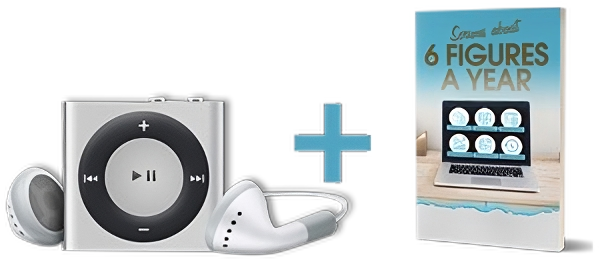Beyond Mad Men: Real-World Lessons from Advertising Legend David Ogilvy
David Ogilvy (1911-1999) wasn’t just a marketer, he was a legend. Nicknamed the “Father of Advertising,” Ogilvy transformed the industry with his data-driven approach and focus on building trust with consumers.
Why was he so great? Ogilvy believed in clear, concise messaging that spoke directly to the customer’s needs. He championed in-depth research to understand consumer behavior and psychology.
At a time when women weren’t considered equal to men, he famously declared, “The consumer is not a moron. She is your wife. You insult her intelligence if you assume that a mere slogan and a few vapid adjectives will persuade her to buy anything.”
Ogilvy’s legacy lives on. His principles of research, consumer focus, and clear communication are still at the heart of effective marketing today.
What can we learn today from the “Father of Advertising?”
If you sat down with David Ogilvy over a cup of coffee to pick his brain, I think he might tell you the following ‘secrets’ to his success along with a few stories to help you remember his points about research, brand building, and customer focus that still apply today.
Research Your Market
Ogilvy was a big believer in thorough research. He would likely advise you to conduct extensive market research to understand your target audience, their online behavior, and the competitive landscape. This could involve surveys, competitor analysis, and studying online trends.
Ogilvy’s emphasis on research played a key role in many successful campaigns. For Schweppes Tonic Water, a seemingly simple product, Ogilvy conducted extensive research that revealed consumers craved a more adult and sophisticated mixer for their gin and tonics.
Based on this insight, he created a campaign that positioned Schweppes as the “grown-up” tonic, leading to a significant increase in sales.
Focus on USP and Benefits
Just like in traditional advertising, Ogilvy would emphasize the importance of a unique selling proposition (USP) for your online business. What makes your product or service different and better than the competition? Focus on communicating the key benefits that resonate with your target audience.
One of Ogilvy’s most iconic campaigns was for Rolls-Royce. At the time, Rolls-Royce ads focused on luxury and prestige. Ogilvy, however, took a different approach.
He wrote a simple yet powerful headline: “At 60 miles an hour the loudest noise comes from the electric clock.”
This ad focused on the car’s engineering excellence, a detail that resonated with Rolls-Royce’s target audience. The campaign was a massive success, showcasing Ogilvy’s ability to understand what truly mattered to consumers.
 Craft Compelling Content
Craft Compelling Content
Ogilvy wouldn’t necessarily advocate for flashy visuals or gimmicks unless he had a good reason. He might advise you to create high-quality, informative content that educates your audience, builds trust, and positions you as an authority in your niche. This content could be blog posts, ebooks, white papers, or informative videos.
But if the need arose to do something unconventional to stand apart from the crowd, Ogilvy rose to the occasion.
In a campaign for Hathaway shirts, a category dominated by models with perfect smiles, Ogilvy featured a distinguished-looking gentleman with an eye patch.
This unexpected element sparked curiosity and memorability, making the ad stand out and effectively conveying the brand’s message of timeless sophistication.
Don’t Forget the Power of Storytelling
Ogilvy believed in using storytelling to connect with consumers on an emotional level. You can translate this principle to your online business by crafting stories that showcase how your product or service solves customer problems and makes their lives better.
Ogilvy understood the power of visuals in storytelling. When Braniff International Airlines wanted to revamp their image, Ogilvy didn’t just focus on traditional airline advertising. He created a series of eye-catching posters featuring vibrant colors and playful imagery.
One iconic poster showed a woman in a red bikini lounging on a white beach chair, with the headline “Braniff Takes You to Places Where Your Clothes Are Optional.” This unconventional campaign broke through the clutter, generating significant buzz and positive brand association.
Build Brand Trust Online
Ogilvy emphasized the importance of building trust with consumers. In the online world, this translates to having a professional-looking website, providing excellent customer service, and being transparent about your business practices.
While luxury brands often shy away from guarantees, Ogilvy used them to build trust.
When launching the Rolls-Royce Silver Cloud, a new, smaller, and more affordable model, there were concerns about how existing Rolls-Royce owners might react.
Ogilvy’s solution was bold – a full-page ad headlined “Your New Rolls-Royce. It’s smaller. It’s lighter. And we guarantee it.” This unexpected guarantee reassured existing customers that the brand’s commitment to quality remained, while simultaneously enticing a new market segment with the promise of owning a Rolls-Royce.
Leverage the Power of Data
While Ogilvy’s time predates big data, he understood the importance of research and measurement. In the online world, this means utilizing website analytics tools to track user behavior, understand what content resonates, and optimize your online marketing campaigns.
Ever the research advocate, Ogilvy commissioned a blind taste test with hundreds of consumers. He discovered that a surprising number of people preferred the taste of Maxwell House over other leading brands.
Armed with this data, Ogilvy completely revamped the Maxwell House advertising strategy. He scrapped the emotional appeals and celebrity endorsements, and instead, focused on the taste test results.
The resulting campaign featured headlines like “Maxwell House Wins Blindfold Test” and visuals depicting people blindfolded, tasting different coffees. These ads directly addressed the consumer preference revealed by the data.
This data-driven approach was a massive success. The campaign resonated with consumers, sales for Maxwell House skyrocketed, and Ogilvy cemented his reputation as a pioneer of research-based marketing.
Headlines are Crucial
Ogilvy emphasized the importance of headlines, stating, “The headline is 80% of the ad. It’s the bait on the hook. If it doesn’t grab attention, nobody will read the rest of your message.” Ogilvy advised against complex or overly clever headlines. He said that. “People are busy. Keep your headline short, sweet, and easy to understand. Use plain language, not marketing jargon.”
Ogilvy was a master of crafting headlines that grabbed attention and resonated with consumers. When tasked with launching Dove soap in the American market, a category filled with claims of beauty and glamour, Ogilvy took a different route.
He presented several options to the client, but the most successful was a seemingly simple one: “Dove is ¼ moisturizing cream.” This straightforward headline focused on the product’s key benefit, differentiating Dove from its competitors and driving consumer interest.
Know Your Customer and Be Honest
David Ogilvy wasn’t just about catchy slogans or celebrity endorsements. His advertising ethics were rooted in honesty and a deep understanding of the consumer. He believed in research-driven campaigns that addressed real customer needs, not just creating a buzz. Ogilvy rejected clients whose products or marketing approaches he felt were misleading or deceptive.
For him, building trust with consumers was paramount, and that meant truthful advertising that focused on the genuine benefits a product or service offered. This ethical approach not only protected his reputation but also ensured the long-term success of his campaigns.
One time a prominent margarine company approached him with a significant advertising budget. The company executives excitedly presented their vision for the campaign – a series of commercials featuring celebrities singing catchy jingles about their margarine. Ogilvy listened patiently, then politely challenged their approach.
He expressed his reservations about relying solely on celebrity endorsements and catchy tunes. He emphasized the importance of understanding the target audience and the product’s true benefits. He inquired about any research conducted on consumer preferences or the health aspects of their margarine compared to butter.
The executives, taken aback, admitted they hadn’t conducted any in-depth research. They simply assumed a celebrity-driven campaign would be successful. Disappointed, Ogilvy declined the project.
He explained that without a solid foundation of research and a clear understanding of the product’s strengths, any advertising campaign would be like “shooting arrows in the dark.” He stressed that effective marketing required honesty, a focus on consumer needs, and a commitment to building trust through transparency.
The story goes that the company eventually went with another advertising agency that created the celebrity-focused campaign they wanted. However, the results were underwhelming, solidifying Ogilvy’s belief in the importance of his principles.
Remember, Ogilvy’s marketing advertising principles are timeless, even in the ever-evolving online world. By focusing on research, brand building, compelling content, and a customer-centric approach, you can build a strong foundation for your online business.
Would you like to discover more about how David Ogilvy became regarded as the Father of Advertising? Then you might look for these books:
David Ogilvy authored the following books:
Ogilvy on Advertising (1983) – A foundational work in advertising, it details Ogilvy’s core principles and philosophies.
Confessions of an Advertising Man (1963) – Part autobiography, part business memoir, this book offers insights into Ogilvy’s career and the world of advertising.
The Unpublished David Ogilvy (1998) – A collection of Ogilvy’s writings, including memos, letters, speeches, and interviews, compiled by his family and colleagues.
In addition to these three books, there are also other publications associated with David Ogilvy:
Blood, Brains & Beer: The Autobiography of David Ogilvy (1978) – This is a British edition of Ogilvy’s autobiography with a slightly different title.
David Ogilvy: An Autobiography (Trailblazers) (2012) – This appears to be a repackaged version of Ogilvy’s autobiography, possibly targeting a specific audience.
Claim Your Free MP3 And PDF Training: The 3-Part Plan To Topping $100,000 Per Year In Profit
Enter your name and email address below to receive a new lesson delivered to your inbox once a week. Your first lesson will be delivered immediately.

Privacy Policy : We value your privacy. You can unsubscribe from receiving future emails with 1 click at any time.














